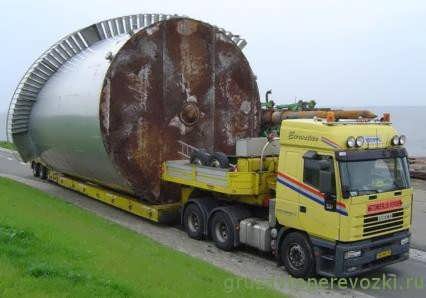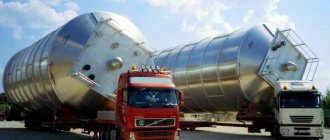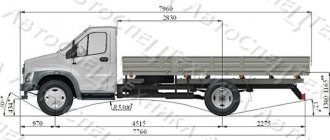Transportation safety is a priority not only for the responsible logistician, but also for the parties who move the cargo when concluding an agreement. Along the way, various risks arise that can cause serious damage to the customer, the delivery recipient, and others: complete loss of the shipment due to theft, loss, or destruction during an accident. Insurance companies are also interested in ensuring that an insured event does not occur on the way, otherwise they will have to compensate for losses.
Possible risks when transporting goods
Ensuring the safety of cargo transportation is the responsibility of the logistician, who takes measures to protect the shipment. A reputable company will definitely offer to insure the cargo and equip the car with security systems. But specific risks during cargo transportation by road cannot be excluded:
- Theft of an object - with insufficient transportation security measures, unauthorized entry and hacking of security systems are possible.
- Damage, complete or partial, means the condition of the object may be deteriorated due to non-compliance with transportation rules, road accidents, or vandalism.
- Risks to the life and health of the driver - when transporting cargo, safety is important for the vehicle operator, who is responsible for the shipment.
In addition to specific risks, delivery of a consignment without compliance with transportation rules threatens significant financial losses for all parties to the contract. How to ensure the safety of cargo will have to be decided by the responsible logistician in order to prevent:
- The car is incorrectly equipped, there are no climate systems - damage to the batch, loss of presentation.
- Late delivery due to force majeure, an accident, delay on the route due to a car breakdown - a fine for missed deadlines, the recipient will file a claim with the sender, the logistician.
The driver, who undergoes special instructions and signs the appropriate document, must comply with safety precautions when transporting cargo.
Threats to transport security and their classification
Definition 1
Transport security is the state of protection of elements and objects of transport infrastructure from illegal actions.
Today, the main cause of transport security violations is various terrorist acts. Criminal activities also pose a particular threat to transport safety.
The purpose of transport security is to protect owners and passengers of vehicles, recipients and carriers of goods, workers of transport infrastructure, as well as its material property. Transport security is designed to ensure:
- Travel conditions that will be safe for passengers and carriers.
- Safety of cargo transportation.
- Safety of functional operation of elements and objects of transport infrastructure.
- Economic security of transport infrastructure units.
- Environmental safety of transport infrastructure facilities.
- Readiness of sectors of the transport complex.
- Fire safety.
- Sanitary safety.
- Information security.
Finished works on a similar topic
- Course work Transport safety 430 rub.
- Abstract Transport safety 220 rub.
- Test work Transport safety 220 rub.
Receive completed work or specialist advice on your educational project Find out the cost
A huge number of natural and man-made threats cause weakening transport security.
The main threats to transport security are:
- terrorist acts (seizure or hijacking of river, air and sea vessels, railway transport, motor vehicles, explosions of means and at transport infrastructure facilities);
- cases of interference in the operation of transport (installation and placing of foreign objects on railway rails, false telephone calls, illegal blocking of transport routes), which can threaten the life and health of passengers, and also cause material damage to transport infrastructure;
- criminal actions against passengers (mutilation, etc.);
- criminal actions in relation to goods (theft and damage to transported goods);
- emergency situations (accidents), the cause of which may be the technical characteristics of transport systems (wear and tear), violation of operating rules, as well as natural phenomena.
Too lazy to read?
Ask a question to the experts and get an answer within 15 minutes!
Ask a Question
Also, threats to transport security can be classified according to the nature of the threat sources:
- Threats of a sociogenic nature (hooliganism, terrorism, blocking highways, violation of operating rules, major car accidents, cargo theft).
- Technogenic threats (worn-out or low-quality materials used for the construction of transport infrastructure facilities and the manufacture of vehicles.
- Natural hazards (floods, avalanches, landslides, earthquakes and others).
Also, sources of threats to transport security can be divided into external and internal.
External sources include the activities of foreign structures that are directed against the Russian Federation, the aggravation of international relations in the field of transport, and the activities of international terrorist organizations.
Internal reasons include the critical state of transport systems, an unfavorable crime situation, and irresponsible work of transport services.
Rules for safe transportation of goods
The following rules will help ensure timely delivery without the risk of losing or damaging the shipment:
- Technical condition of the vehicle - before the route, check for serviceability, compliance of the transported lot in terms of parameters, load capacity, body dimensions.
- Installing a security system is a mandatory safety requirement when transporting cargo. Depending on the specifics of the batch, equipment will be selected: complex locks, video surveillance, signal beacons, etc.
- Driver's responsibilities: does not distribute confidential information about the composition of the cargo, specifics, value, or batch nomenclature. Strictly observes safety precautions, does not deviate from the intended path, and does not delay.
- Route - for the safety of freight transportation, the logistician develops a route, taking into account travel time, stopping points, and the trucker’s rest.
- Coordination along the way is provided by the dispatcher, constantly maintaining contact with the driver. During communication, the presence of strangers and disclosure of information is unacceptable.
- Driver rest is only in specialized places. An employee can spend the night or relax in motels or hotels where there is guarded parking for a car.
- Control of party movement. To avoid dangerous situations, respond to them in a timely manner, and help the driver, the dispatcher must maintain contact with the truck driver around the clock.
- Compulsory insurance is a guarantee of compensation for losses.
It is not only the truck driver who is responsible for the safe movement of goods. This is the painstaking work of the carrier company, where many specialists take an active part:
- logistician - develops the route;
- dispatcher - continuous communication;
- personnel - prepares the truck before leaving for the route;
- driver - compliance with safety precautions on the road.
The movement of valuable and dangerous goods must be trusted to a logistician who anticipates all risks in advance.
Traffic rules when transporting goods
Today, road transport is practically the most common type of activity in the world. There are many road carriers ready to provide their services in the field of cargo transportation.
The legal side of this activity is regulated by legislation and contracts that the parties enter into among themselves. The main set of legal norms that must be adhered to while driving a vehicle in general, and when transporting goods in particular, is a collection of Traffic Rules . In it, regarding the requirements for the transportation of goods
, the following requirements are specified:
1. The total mass of the transported cargo and the distribution of its weight on the axle of the vehicle must not exceed the values defined by the technical characteristics of the vehicle.
2. The driver must check before starting transportation whether the cargo is securely secured and positioned, and must also control it during movement to prevent falling, dragging or injury to persons accompanying the cargo, or creating any obstacles during movement.

3. Cargo can be transported under the following conditions: a) the cargo does not pose a threat to the safety of road users; b) the load does not complicate steering and does not increase the stability of the vehicle; c) the cargo does not limit the driver’s inspection; d) external lighting devices, reflectors, recognition and license plates are visible; e) the cargo does not create any noise, nor does it raise dust or in any way pollute the environment or the roadway.
4. Loads protruding beyond the dimensions of the vehicle in the front or rear by more than one meter and at the same time exceeding the width of 40 cm from the edge of the side lamp must be marked in accordance with the requirements of paragraph 30.3 of the Road Traffic Regulations.
5. Transportation of dangerous goods, as well as containers that have not been rendered harmless, is carried out in accordance with special rules that allow the movement of vehicles and, accordingly, their trains if at least one of the dimensions exceeds 265 cm in width and 400 cm in height. (for container ships installed on routes - 435 cm). Length - 2200 cm (route vehicles - 2500 cm), total vehicle weight over 38,000 kg, load on a single axle - 10,000 kg, load on dual axles - 16,000 kg, triple axles - 22,000 kg (on routes determined by the Ministry of Transport and the State Traffic Inspectorate - 40,000 kg, for container ships - 44,000 kg, load on a single axle - 11,000 kg, load on dual axles - 18,000 kg, load on triple axles - 24,000 kg) or in the case, if the load during movement protrudes beyond the rear of the vehicle by a distance exceeding 2 m. The axles are considered dual or, by definition, triple if the distance between them does not exceed 2.5 m.
More on the topic: How to issue a power of attorney to receive, transport, deliver cargo
6. When driving a vehicle transporting oversized, dangerous or heavy cargo, it is necessary to turn on orange flashing lights, as well as low beam headlights and tail lights, which have reflective elements.
Safe loading and unloading
To preserve the shipment, it is important not only to move it correctly, but also to carefully load and unload it. These obligations fall on the sender and the recipient. The solution is to entrust the task to a carrier who has special equipment and a team of experienced riggers. Safe loading:
- Piercing, sharp objects are transported in protective cases and covers.
- Containers with a hard, traumatic surface - work with gloves.
- Use of loading equipment, elevator - heavy, bulky objects.
- Fastening system in the body - overpasses, lathing, supports. Tighten the fastening belts and use stands.
- Heavy objects are placed closer to the cabin.
- Light objects - in the upper part of the body.
When loading, the person in charge must make sure that the length of the object does not exceed the dimensions of the vehicle by more than 1/3 - a guarantee of safe movement. Ignoring the rule will lead to an emergency.
Flight safety
The driver is the person on whom the safe and timely delivery of the shipment depends. Therefore, the carrier is obliged to comply with labor safety rules for employees:
- Flight duration. One person should not be driving for more than 12 hours - one work shift.
- Change of drivers - if the route exceeds 250 km and lasts longer than 12 hours, the route is served by two truck drivers, changing each other.
- A working week for one worker should not exceed 38-40 hours.
The driver undertakes to comply with the established speed limit and not make dangerous maneuvers that could provoke an accident.










